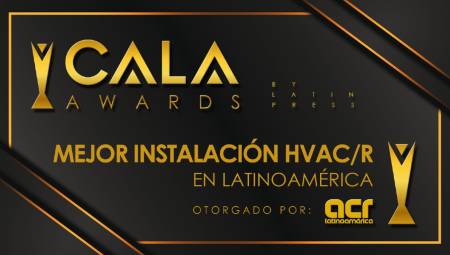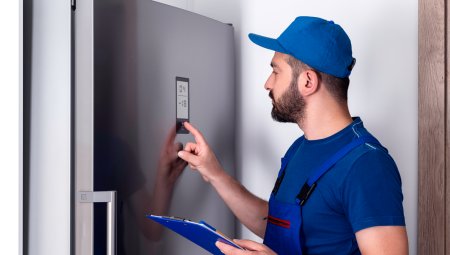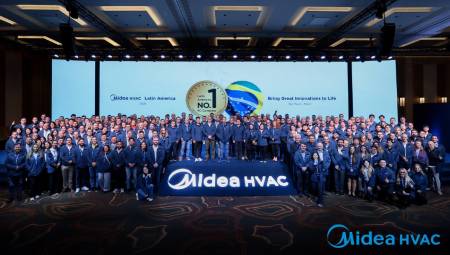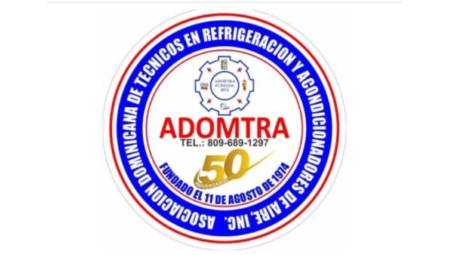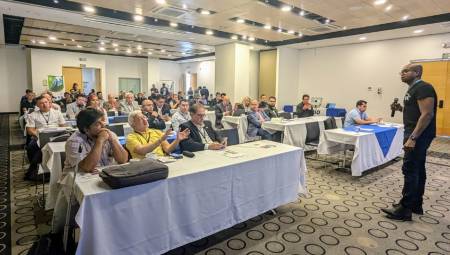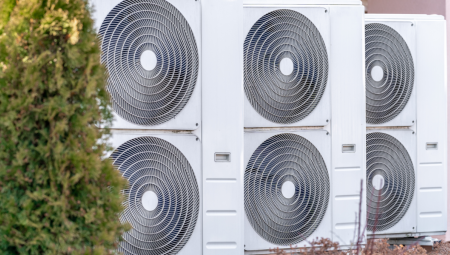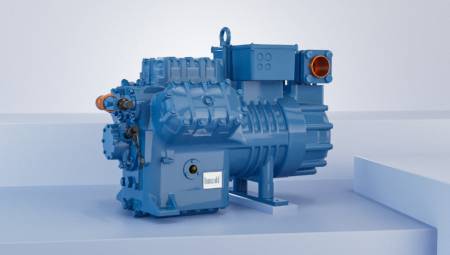by Iván Darío Quintero
With the emergence of free trade agreements, food has been forced to retain its freshness characteristics for longer, facing long journeys on rough roads, extremely hot days and long waits in ports before reaching the time of its final consumption. Perishable foods such as fruits, vegetables and meats are some of those most exposed to these inclement circumstances.
The industrial freeze almost forty years ago, was adopted as the solution par excellence for the management of large volumes of food production for export or long periods of conservation. The industry started with the premise that the faster the process of freezing a product, the more likely a food will be to reach its final consumption as if it were freshly collected or slaughtered.
The more time passes between the beginning of the freezing of food and the moment of its total freezing, the more feasible it will be that its cellular tissue will be destroyed by the effects of freezing itself and by the proliferation of microorganisms, the consequence of this happening we have all witnessed when in our houses we observe a steak, which at the time of its thawing releases water blood, as a result of a slow freezing process.
If the freezing process is slow, the ice crystals become larger and tissue breakdown originates.
Fruits, vegetables, meats, fish, poultry and everything that can be frozen can present the same symptom that will undoubtedly end in the loss of the initial characteristics of quality and freshness.
Industrially there are different ways to freeze products and there are many variables to take into account to determine the freezing time of each one; in the same way, the processes and care depend on what you want to freeze, since today the industry allows you to freeze almost anything.
Given the boom that free trade agreements have in Latin America and that thanks to these more refrigeration procedures are carried out, we decided to elaborate an article on the freezing processes most implemented in the region, since the initial freezing is a fundamental part of the cold chains
Cold chains are the method of food preservation and those responsible for a person in Hamburg can enjoy a melon, with the same characteristics of freshness that delight the Mexican.
In addition to the review of an extensive literature on the subject, we also rely for the elaboration of this article, on the knowledge provided by the engineer Florindo Barucca, president of Frigostella Argentina and the engineer Federico Hong, engineering manager of the Costa Rican company, Refrigeration Industrial Beirute S.A.
Industrial freezing methods
Initially we can talk about three major methods of industrial freezing, which according to their degree of implementation in the region could be presented in the following order: firstly the process of freezing by air, second the freezing by contact of cold metal plates and finally we can mention the freezing by cryogenic fluids, that can be made with N2, freons, among other compounds. This system is not widely adopted in Latin America due to its high costs, but in other regions it is a technology that is in clear growth thanks to its freezing speed and its virtues with the environment.
Freezing methods are present in various machines that offer different characteristics according to the food or production need, generally the production capacities of a machine are usually measured according to its freezing speed in centimeters per hour. However, depending on the type of product to be frozen, the characteristics of the product and the production volumes sought, the most appropriate freezing system and machine will be determined. {mospagebreak}
According to the engineer Barucca what has been most used for the industry of meats, fish, shrimp, fillets and in itself everything that is meats, is the refrigeration in freezers of contact plates.
For agribusiness as in the case of pineapple, melons, mango, vegetables, cheeses, among other delicate foods, what is usually used are the so-called freezing tunnels, which would be within the category of freezing by air.
However, clearly differentiating all refrigeration systems can be a rather intricate path, as many of the machines can combine two or more of the freezing methods; in the same way, in the market you can find a large number of equipment available.
But let's look at some of the amazing features of the most widely deployed machines in the region.
Freezing tunnels
Freezing tunnels are the most implemented machines in Latin America, these are used in the industry to freeze mainly fruits vegetables and also some companies use them to freeze meats such as chicken. In some countries it is also used to freeze tuna.
There are freezing tunnels of various types, with different constants in terms of freezing capacities and speeds. But within the best known tunnel type machines are: the basic system that is known as freezing tunnel, the continuous tunnel, the multi-band freezing tunnel and we can add here the spiral freezer, since it has similar operating characteristics to tunnels, as they are generally machines that freeze by air circulation.
The basic freezing tunnel consists of chambers inside which shelves with wheels are introduced where fruits, vegetables or whatever you want to freeze are placed. During the journey through tunnel, the products are all the time in contact with cold air. The air is cooled by circulating in cooling coils, which are cooled by conventional mechanical cooling.
The freezing in these tunnels is usually slow, which causes large ice crystals that result in the aforementioned breakdown of the cellular tissue.
Another tunnel that has been widely implemented for the cold chains of the food industry, has been the continuous type freezer tunnel, which unlike the previous tunnel does not have conveyor trolleys but conveyor belts. This system freezes by means of bursts of air that circulate above the products at a temperature between -30º C and -40º C, passing at a speed of between 5 and 6 m / s. One of the problems that this tunnel can have is that the product can suffer from surface desiccation. However, the so-called continuous tunnel can offer yields of between 200 and 300 kilos per hour.
Given the wide variety of modifications that tunnel type equipment has, it can be estimated that one of its main characteristics is the ability to adapt to the needs of each industry.
One of the most popular variables of air freezing is the spiral tape freezer, which freezes by means of air bursts, basically it is a mesh that spirals with the product, while the cooled air descends in bursts above these performing the freezing process, but the most amazing thing about this system is that it can freeze up to 3000 kilograms of product in an hour. This machine is mainly used for the precooked food industry and preferably that they are not packaged. {mospagebreak}
Contact plate freezers
Contact plate freezer machines there are two types: horizontal and vertical; the horizontal ones are used to freeze trays or boxes, that is, they are used more when the product is already packed, for example in the case of cuts of meat, or boneless meat that is placed in trays, these are placed between the plates of the machine and frozen. Vertical plate freezers are generally used to pack bulk product, that is, products that are not packed, in the same way the bare product is placed between the plates and frozen, then once frozen it is removed and packed.
The plates are aluminum shelves that have perforations inside, inside them circulates the coolant, which is usually ammonia, although it can also be a freon, but according to the engineer Barucca, the ratio is 98% ammonia 2% freon. The refrigerant circulates inside the plates and they act as an evaporator. These freezer machines reach temperatures below negative 30º C even reaching minus 40º C.
Contact plate freezers generate blocks of ice with thicknesses ranging from six centimeters, in the case of fish block, to 15 centimeters and in the case of giblets or meat. This factor is fundamental to determine how long the freezing process takes, however you can freeze with this system, if everything is fine, three thousand kilos of meat in five hours or six, or you can freeze up to two tons of fish block in three hours. The product that comes out frozen is removed, in the case of meat, when it is at -20ºC in the core, and in the case of fish when it reaches -25ºC in its core. From there the products continue their passage through the links of the cold chain until they reach the final consumer.
Contact plate machines are considered an efficient system within the freezing processes, since thanks to their freezing speed the products manage to preserve the desired characteristics of quality and freshness.
The various cooling tunnels and contact plate freezers are the most widely used methods currently for industrial freezing in the region. However, cryogenic freezing systems by immersion in liquid nitrogen have begun to be implemented in various parts of the world, and there is also talk of processes based on carbon dioxide, these systems have gained ground because they greatly reduce the freezing time, which is perhaps the most important challenge for cold chains, In the same way their energy efficiency and the care of the environment leave these systems as a very interesting alternative in the future, to the extent that they lower their costs.
The use of nitrogen within the freezing industry already has several users around the world, today it is possible to get on the market different freezing machines that work with this component, it is the case of the continuous rotating liquid nitrogen freezer and the discontinuous liquid nitrogen freezer.
Implementing a freezer system with N2 can save up to 20% relative to what a traditional freezing installation might cost. But the problem is that in N2 freezing processes, the compound alone – liquid nitrogen – accounts for about 90% of the total freezing costs.
In reality the freezing systems are of many types and it would take us longer to be able to approach everyone, the ones we saw here are the most used in Latin America, in Europe there is already a clear inclination towards cryogenic systems, although their implementation is still slow. It will be on a next occasion that we approach to observe other types of freezing or to delve into the critical issues that each of these systems entails.


